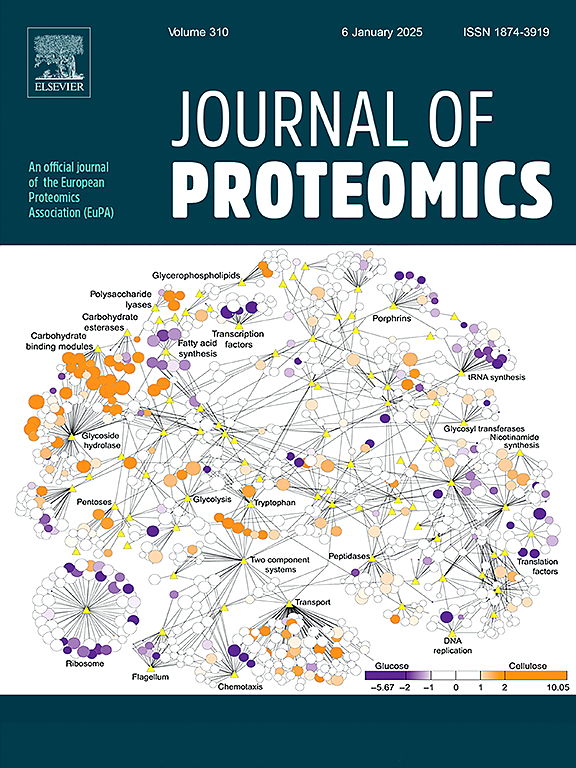Differential gene expression networks and auxin responses during maize callus induction from explant tissues with contrasting embryogenic potential
IF 2.8
2区 生物学
Q2 BIOCHEMICAL RESEARCH METHODS
引用次数: 0
Abstract
Maize somatic embryogenesis process depends on explant characteristics and genotype. The relationship between explant developmental timing and embryogenic potential of derived tissues is still poorly understood. The present work explored the adjustments of transcriptomes and proteomes from explants with contrasting embryogenic potential – immature and mature zygotic embryos from the Tuxpeño VS-535 genotype – during callus induction. Differentially accumulated transcripts and proteins were represented by oxidation/reduction, stress response, and metabolic process adjustments during the dedifferentiation of both explants. However, the explant with high embryogenic potential and derived callus displayed more significant enrichment in cell proliferation and plant hormone signal transduction pathways. Between the differentially accumulated proteins, it is of notice a significantly higher enrichment of catabolic and anoxia processes in non-embryogenic as opposed to anabolic and oxidation-reduction processes in the embryogenic callus induction. Transcription factors such as Auxin Response Factors (ARFs), signal transduction (Homeobox; HB), and embryogenesis-related AP2-EREB mRNAs characterized the immature embryos. Activator and repressor ARFs substantially differed at the early stages of callus induction between immature and mature embryo explants. The overall analysis of these findings helps to understand the molecular basis of gene expression regulation during callus dedifferentiation and auxin responses from maize explants with contrasting embryogenic potential.
Significance
This work contributes with overall transcript and protein patterns during the callus induction phase of Mexican landrace Tuxpeño VS-535 maize somatic embryogenesis from immature and mature embryos. Using comparisons between explants, between each explant and the induced callus, and between callus, differential biological process enrichment at transcript and protein levels for the embryogenic callus induction indicated key roles for cell proliferation, hormone signaling and biosynthetic processes for embryogenic callus induction. Furthermore, a battery of TF family enriched in the immature embryo, including several auxin response factors support the differential gene expression reprogramming during dedifferentiation from explants with contrasting embryogenic potential in maize somatic embryogenesis.

不同胚性组织诱导玉米愈伤组织的差异基因表达网络和生长素响应
玉米体细胞胚发生过程取决于外植体特性和基因型。外植体发育时间和衍生组织的胚胎发生潜力之间的关系仍然知之甚少。本研究探讨了具有不同胚胎发生潜力的外植体(Tuxpeño VS-535基因型的未成熟和成熟合子胚胎)在愈伤组织诱导过程中转录组和蛋白质组的调节。在两个外植体去分化过程中,差异积累的转录本和蛋白质表现为氧化/还原、应激反应和代谢过程调整。而高胚胎发生潜能的外植体和衍生愈伤组织在细胞增殖和植物激素信号转导途径上表现出更显著的富集。在不同积累的蛋白质之间,值得注意的是,与胚胎性愈伤组织诱导中的合成代谢和氧化还原过程相反,非胚胎性愈伤组织中分解代谢和缺氧过程的富集程度明显更高。转录因子如生长素反应因子(ARFs)、信号转导(Homeobox;HB)和胚胎发生相关的AP2-EREB mrna是未成熟胚胎的特征。在未成熟胚和成熟胚愈伤组织诱导的早期阶段,激活因子和抑制因子arf存在显著差异。综合分析这些发现有助于了解不同胚性玉米外植体愈伤组织去分化和生长素响应过程中基因表达调控的分子基础。意义本研究对墨西哥地方品种Tuxpeño VS-535玉米幼胚和成熟胚的愈伤组织诱导阶段的整体转录和蛋白模式有贡献。通过外植体之间、外植体与诱导愈伤组织之间以及愈伤组织之间的差异比较,揭示了胚性愈伤组织诱导过程中转录物和蛋白质水平的差异富集在细胞增殖、激素信号传导和生物合成过程中发挥的关键作用。此外,在未成熟胚中富集的TF家族,包括几种生长素响应因子,支持玉米体细胞胚发生中具有不同胚性的外植体去分化过程中的差异基因表达重编程。
本文章由计算机程序翻译,如有差异,请以英文原文为准。
求助全文
约1分钟内获得全文
求助全文
来源期刊

Journal of proteomics
生物-生化研究方法
CiteScore
7.10
自引率
3.00%
发文量
227
审稿时长
73 days
期刊介绍:
Journal of Proteomics is aimed at protein scientists and analytical chemists in the field of proteomics, biomarker discovery, protein analytics, plant proteomics, microbial and animal proteomics, human studies, tissue imaging by mass spectrometry, non-conventional and non-model organism proteomics, and protein bioinformatics. The journal welcomes papers in new and upcoming areas such as metabolomics, genomics, systems biology, toxicogenomics, pharmacoproteomics.
Journal of Proteomics unifies both fundamental scientists and clinicians, and includes translational research. Suggestions for reviews, webinars and thematic issues are welcome.
 求助内容:
求助内容: 应助结果提醒方式:
应助结果提醒方式:


